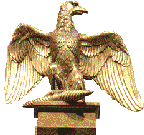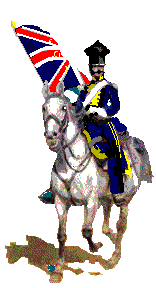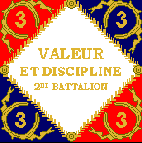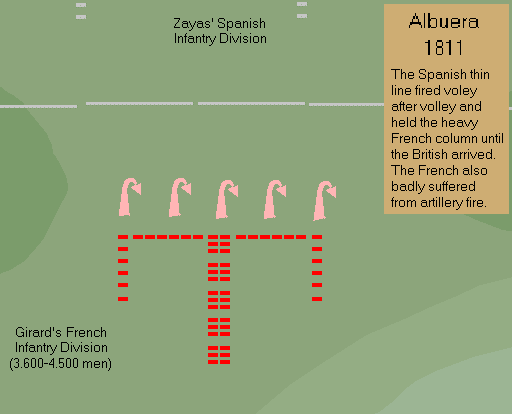
The Vistula Ulans at Albuera, May 1811
"Oh Albuera, glorious field of grief !"
- Lord George Byron


|

Battle of Albuera, May 16, 1811
 A force under Beresford had moved south away from Badajoz to fend off French attempt to relieve the first siege of that frontier fortress. On May 15th Beresford with 35,000 British, German, Portuguese and Spanish troops reached the town of Albuera. The battlefield was a rolling line of low hills along a narrow stream, facing a gentle slope studded with olive groves. To the west of the hills was an extensive plain.
Bersford deployed his troops on the low hills, parallel with the river Albuera. The infantry and artillery took up position overlooking the village of Albuera. The village was held by two battalions of King's German Legion. "The Allied army was deployed in a strong defensive position across the undulating, treeless fields south of Albuera. ... The left wing - Hamilton's Portuguese division and most of the Portuguese cavalry - lay to the north of the Badajoz road. The centre - founded on Albuera itself - comprised the divisions of Cole and Stewart, supported by Alten's light brigade and over 1,000 horse. The southern section was made up of the four Spanish infantry divisions - some 12,000 men - backed by another mass of Allied cavalry and several batteries of artillery." (Gates - "The Spanish Ulcer" pp 256-258)
A force under Beresford had moved south away from Badajoz to fend off French attempt to relieve the first siege of that frontier fortress. On May 15th Beresford with 35,000 British, German, Portuguese and Spanish troops reached the town of Albuera. The battlefield was a rolling line of low hills along a narrow stream, facing a gentle slope studded with olive groves. To the west of the hills was an extensive plain.
Bersford deployed his troops on the low hills, parallel with the river Albuera. The infantry and artillery took up position overlooking the village of Albuera. The village was held by two battalions of King's German Legion. "The Allied army was deployed in a strong defensive position across the undulating, treeless fields south of Albuera. ... The left wing - Hamilton's Portuguese division and most of the Portuguese cavalry - lay to the north of the Badajoz road. The centre - founded on Albuera itself - comprised the divisions of Cole and Stewart, supported by Alten's light brigade and over 1,000 horse. The southern section was made up of the four Spanish infantry divisions - some 12,000 men - backed by another mass of Allied cavalry and several batteries of artillery." (Gates - "The Spanish Ulcer" pp 256-258)
The river was fordable in several places. The French, only some 25.000 under Marshal Soult, came from the south-east and on the morning of May 16th drew up facing west. Napier writes: "Two-thirds of the French were in a compact order of battle on a line perpendicular to his [Beresford] right, and his army, disordered and composed of different nations, was still in the difficult act of changing its front. It was in vain to give room on the summit of the hill for the second division to support it; the French guns opened fire, their infantry threw out a heavy musketry fire, and their cavalry, outflanking the front, and menacing to charge here and there, put the Spaniards in disorder in all points, they fell fast, and they gave back." (Napier - "History of the War in the Peninsula 1807-1814" Vol III, p 97)
French Infantry Attack
Spanish Thin Line Halted French Columns
 Spanish thin line halting massive columns of French infantry. (Zayas' division was arguably one of the best Spain had. It consisted of the Spanish and Wallon Guards, Irish Regiment, and Spanish regiments of Ciudad Real, Toledo, Extranjera and Patria.) |
|

Vistula Uhlans vs British Heavy Dragoons
Colonel Konopka detached 4 platoons of flankers from his regiment and sent them against enemy line. In the first line was Sous-lieutenant Rogajski's platoon (25 men) and Sous-lieutenant Wojciechowski's platoon (25 men). Behind them were two other platoons. The leading two platoons were formed in a skirmish chain. They crossed Albuhera Brook on the southern side of Albuhera. Near the town stood infantry of the King's German Legion [KGL]. According to the uhlans the Germans watched them but not a single shot was fired. The Poles passed them and moved against center of British infantry deployed on low hills. The two leading platoons advanced uphill, while the two other under Captain Leszczynski halted by the bank of Albuhera Brook. The leading platoons were attacked by 370 heavy cavalrymen (or 374) of British 3rd (Prince of Wales's) Dragoon Guards led by General Long. It was good unit. The dragoon guards regiments took precedence over all other cavalry regiments of the line. The right to use the 'Ich Dien' badge was granted to the 3rd Dragoon Guards in 1765, and subsequently became their cap badge. The British leading squadron consisted of 120 men; and were the first to clash with the Poles. The combat was very short (ext.link) and the heavies broke and fled. [Ian Fletcher wrote that General Long brought 3rd Dragoon Guards and 13th Light Dragoons. It gives two regiments with total of 770 men against 100 uhlans. The Poles however mention only one British regiment.] The remaining three squadrons of 3rd Dragoon Guards attacked the uhlans. The Poles were heavily outnumbered and fled downhill. Once the pursuers became disordered the uhlans slowed down their "flight", halted, turned around and attacked the disordered Brits. The dragoons were driven uphill and pursued until British infantry opened fire. The uhlans (2 platoons) abandonded their pursuit and withdrew. They had 16 killed and wounded (12 from infantry fire and only 2 from dragoons), while the British dragoons suffered at least 20 casualties (10 killed, 9 wounded, 1 missing). For this battle, Rogoyski and Wojciechowski were awarded with Legion d'Honneur. (Kirkor - "Legia Nadwislanska 1808-1814" p 298)
Meanwhile Colonel Konopka's regiment was alreday moved on French flank. It forced him to recall the 4 platoons of flankers.
|
|

Vistula Uhlans and the Destruction of British Brigade.
The charging uhlans lowered their lances before a thunderous volley greeted them. It didn't stop them, they hit three battalions at once, the 3rd 'Buffs', II/48th 'Northamptonshire' and II/66th 'Berkshire'. The shock was irresistible, and the British fled before the charging ranks in a tumultuous throngs. The lances pierced their clothes, the men clapped their hands to their saber-cut faces, blood oozing. The Poles went with such a right good cheer, bang through the infantrymen, and cut right and left like sheep. In the heat of the fight some of the Brits who signaled to surrender were killed and no mercy was shown in the beginning. The II/31st 'Huntingdonshire' Regiment of Foot (418 men) also found themselves under assault. One of the uhlans spurred his horse, caught up with the flag-bearer, exchanged a few strokes with him, and having split his opponent's head open, triumphantly took possesion of this war trophy.
This attack delivered and completed within the brief space of several minutes, entirely demoralised the British force. Scattered groups of panicked redcoats either surrendered (several hundred), ran for safety, or fought to their death. The confusion was riotous - whinnying horses, screaming soldiers, raised lances, cracking muskets, the battlefield was a cacophony of violent sounds. There is no doubt that the death-roll of the furious charge was increased by the spearing of armed and unarmed (surrendering or attempting to flee) of Colborne's Brigade. The redcoats seemed to become totally disintegrated. The British surrendered en masse; they threw down their arms, stripped themselves of their belts and ran to the rear.
Captain Gordon of Colborne's Brigade was attacked by the Vistula Ulans: "I was knocked down by a horseman with his lance, which luckily did me no serious injury. In getting up I received a lance in my hip, and shortly after another in my knee, which slightly grazed me. I then rose, when a lancer hurried me to the rear, striking me on the side of the head with his lance... He left me, and soon another came up, who would have killed me had not a French officer came up..." It was a carnage. Five or six British Colors were taken. Over the ground strewn with dead and wounded men and horses who were previously in full vigour, rode the "Devils Poles" deeper into enemy's lines.
The Uhlans Captured Guns of KGL
Uhlans Attacking Allies Staff
The British Dragoons fled "faster than they arrived."
Napier writes: "... there were more charges of cavalry made than the writer of the Strictures knows of: and here I may mention a curious example of the impudent falsehood of the Spanish accounts of this war. That Penne Villemu's cavalry fled in a shameful manner, the following statement by Colonel Light proves: 'Afetr our brigades of infantry first engaged were repulsed, I was desired by General d'Urban to tell the Count de Penne Villemur to charge the lancers, and we all started, as I thought, to do the thing well; but when within a few paces of the enemy, the whole pulled up, there was no getting them farther, and in a few moments after I was left alone to run the gauntlet as well as I could.'
|
|

The Last Charges.
Finally Latour Maubourg's cavalry began the great movement which should have taken place earlier. Now it was too late and the momentum was lost. French dragoons charged the British Division (I,II/7th "Royal Fusiliers", I/23rd "Welsh Fusiliers" and the I and II battalion of light inf. of KGL) commanded by Major-General Galbraith Lowry Cole. The redcoats delivered several volleys and repulsed the mass of dragoons. The French horse fell back. The uhlans collected the prisoners and took them to the rear. One of British officers, Major Brooke, recalled; "I was being led as a prisoner between two French infantrymen when one of the lancers rode up, and deliberately cut me down. Then, taking my coat, he endeavoured to pull it over my head."
The Poles while passing the disheartened French infantry shouted, "Comrades, don't give up ! Vive l'Empereur! Vive l'Empereur!" They triumphantly shook the captured standards and the French loudly applauded them. Unfortunately the uhlans had to abandon majority of the captured guns because the French stragglers had stolen their draft horses. [British Major Mervin Nooth of the I/7th Foot wrote that his battalion recaptured some abandoned guns and they discovered the regimental color of I/3rd Regiment of Foot with these trophies.]
|
|

Aftermath.
Napier writes what happened after battle: "Morning came, and both sides remained in their respective situations, the wounded still covering the field of battle, the hostile lines still menacing and dangerous. The greater multitude had fallen on the French part, but the best soldiers on that of the allies, and the dark masses of Soult's powerful cavalry and artillery, as they covered all his front, seemed alone able to contend again for the victory; the right of the French also appeared to threaten the Badajos road, and Beresford, in gloom and doubt, awaited another attack. ... On the 18th Soult retreated." (Napier - Vol III, p 102)
After battle took place an unprecedented conduct in the course of the war - the English refused to provide the few badly wounded uhlans with medical treatment in a petty act of revenge.
The English described the lancers as barbarians/wild beasts/savages.
Casualties.
Casualties suffered by the Spaniards and Portugesee troops are unkown to me. According to Beresford's report the three infantry regiments (Colborne's) lost 319 killed, 460 wounded and 479 were captured as prisoners. (Kirkor in "Legia Nadwislanska 1808-1814" p 299 and Oman Vol IV p 384). Out of the 800 captured Brits, escaped 321. The Vistula Ulans Regiment lost approximately 150 men (26 % of its strength) in all the fights against cavalry, infantry and artillery during the entire day. According to Soult's report 130 uhlans were lost. The 2nd Hussar Regiment lost 24 % of its strength.
Captured British Colors.
Shower of Awards.
The French and British Became Fascinated |
Ps.
Strangely enough until today (2001) there was not a single book about Albuera published in Poland. There are several reasons for this situations. First of all the Brits were not the primary enemy of Poland, the Russians and the Prussians were. Fighting against the Brits was not as emotionally charged as against the Russians. Another reason is that Napoleon was not present at Albuera. A charge in front of Napoleon (like at Somosierra) was ten times more glorious for the Poles than fighting for any other French commander.

Sources and Links.
Bielecki and Tyszka - "Dal nam przyklad Bonaparte"
Kirkor - "Pod sztandarami Napoleona"
Kirkor - "Legia Nadwislanska 1808-1814"
Nafziger - "Poles and Saxons"
Lemonofides - "British Infantry Colours"
Milne - "The Standards and Colours of the British Army from 1661-1881"
Fletcher - "Bloody Albuera"
[In Ian Fletcher's "Bloody Albuera" not a single Spanish, Polish or French source was used. Ian Fletcher used 45 books all written by British authors. With such limited selection of sources this is not surprising that this pro-British, one-sided book. The illustrations are pretty.]
Vistula Uhlans (plastic figures)
Vistula Uhlan on Rearing Horse (plastic figure)